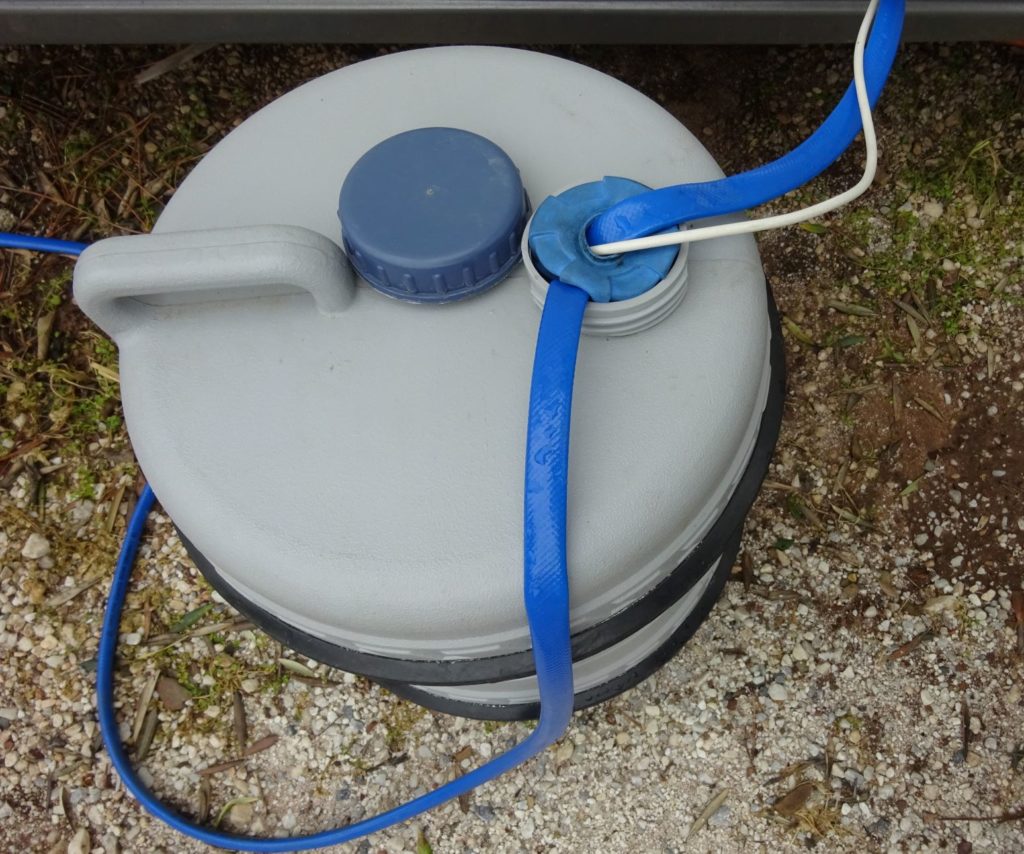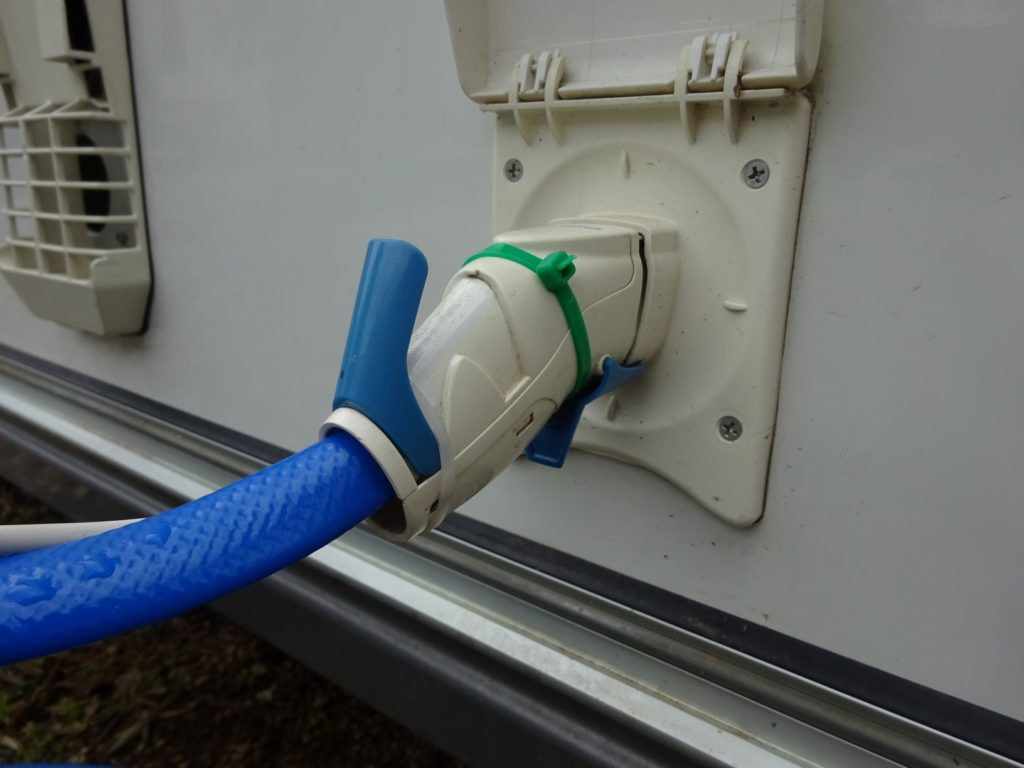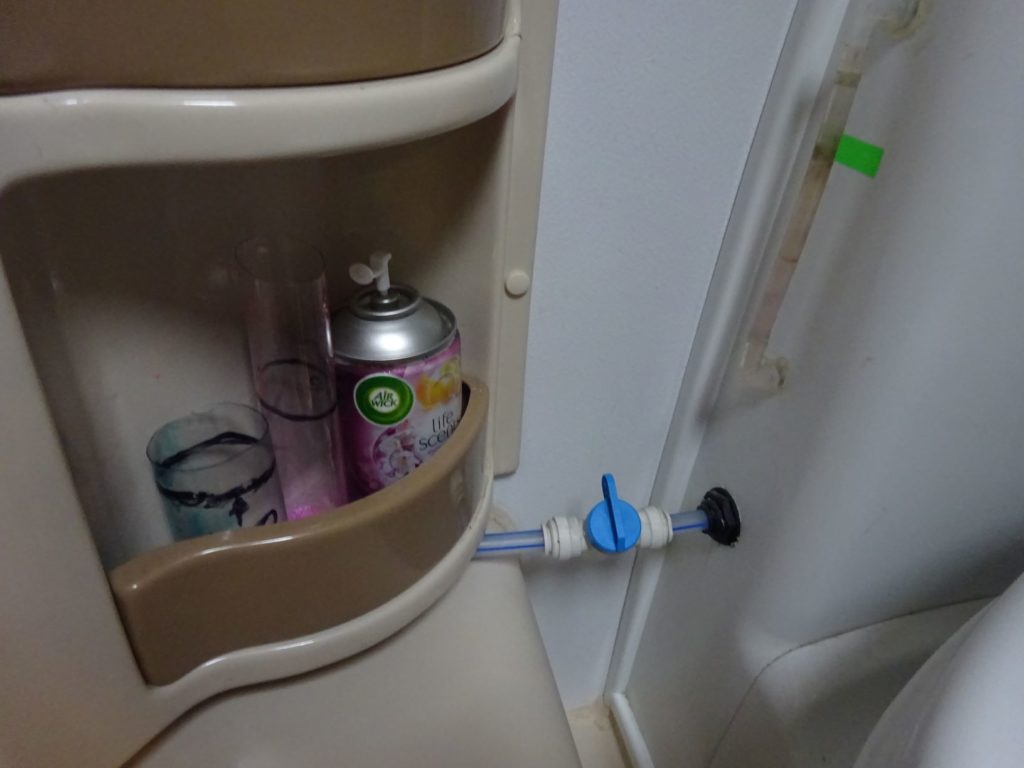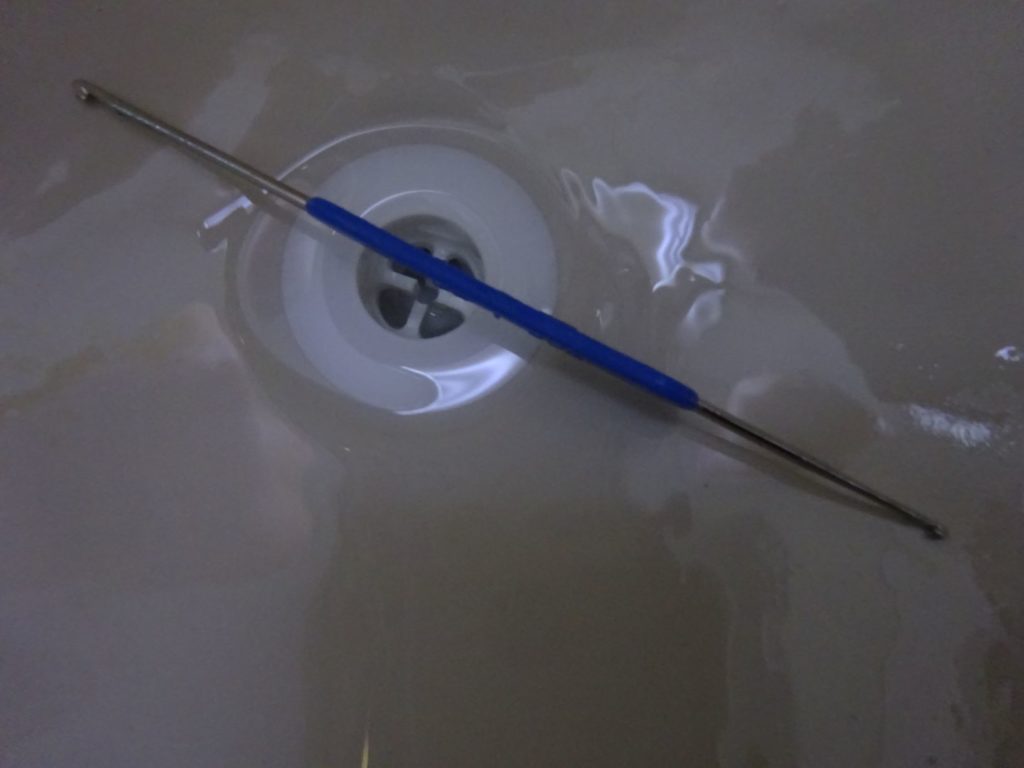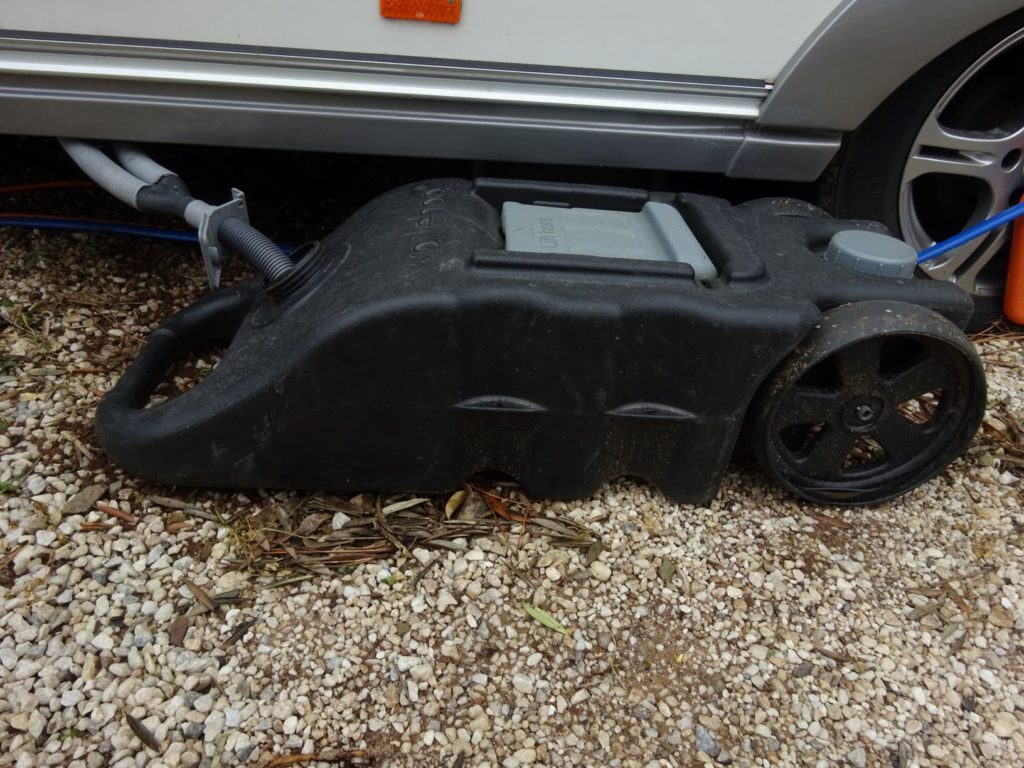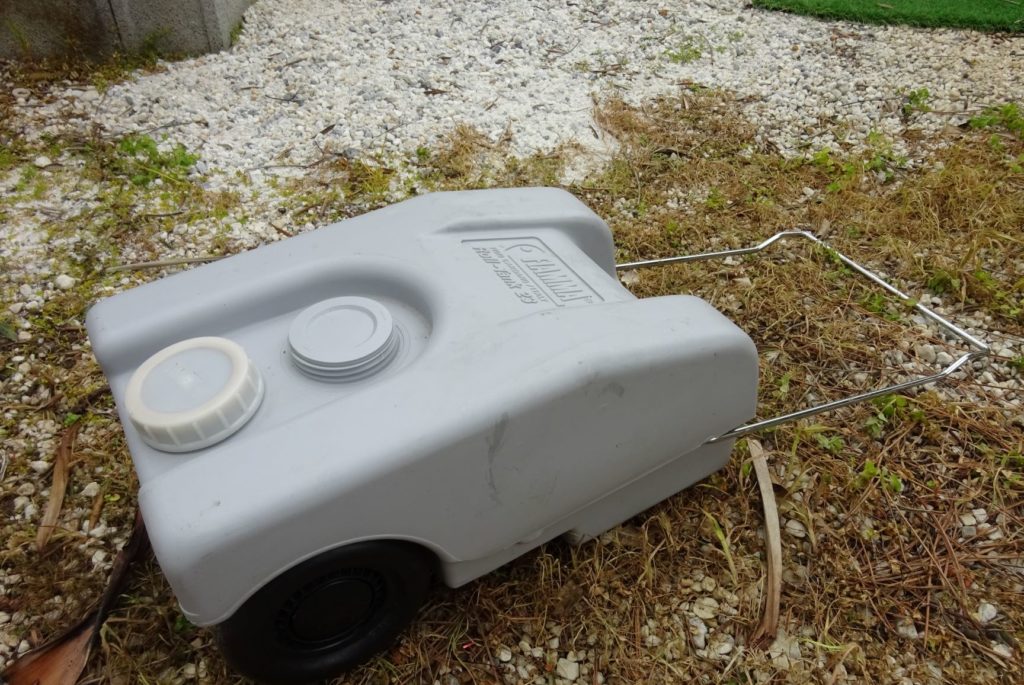OK, let’s talk water, 71% of the world’s surface, sometimes welcome, sometimes not, always heavy, ( I Litre = I Kilogramme), it’s wet and needs containment. This is how we manage our caravan water, it’s not advice, not a guide, not endorsements, just how we do it.

Our Adria is getting on for 10 years old now, so maybe some of this is “old school” but it’s suited to our needs, yours may obviously be different, email us with any suggestions, we’re still learning and adapting.
Barrels – Let’s look at our water needs, we wash and shower daily in the caravan, we use the loo, we wash up, we have a small washing machine, and we brush our teeth. Total self containment. Apart from washdays, that means around 30l /40l of water daily. I’d always though that two 40ltr barrels was excessive, but it’s about right where you have to go and get the water. It is so much easier to let one run dry, move the pump over and refill at leisure, rather than have to rush to the tap, and get some more, whilst half showered. We have the room in the front locker for these. and carrying them up front is little weight penalty. Ideally, we should maybe have two the same – one day I’ll get a matching pair.

Filling Pipes – We saw the idea for filling pipes for sale on some sites, but have made our own, for filling from a tap. As you can see in a later picture it can be assembled for most circumstances, and does save the wet shoes and balancing act for the higher taps, or those more annoying press button ones.
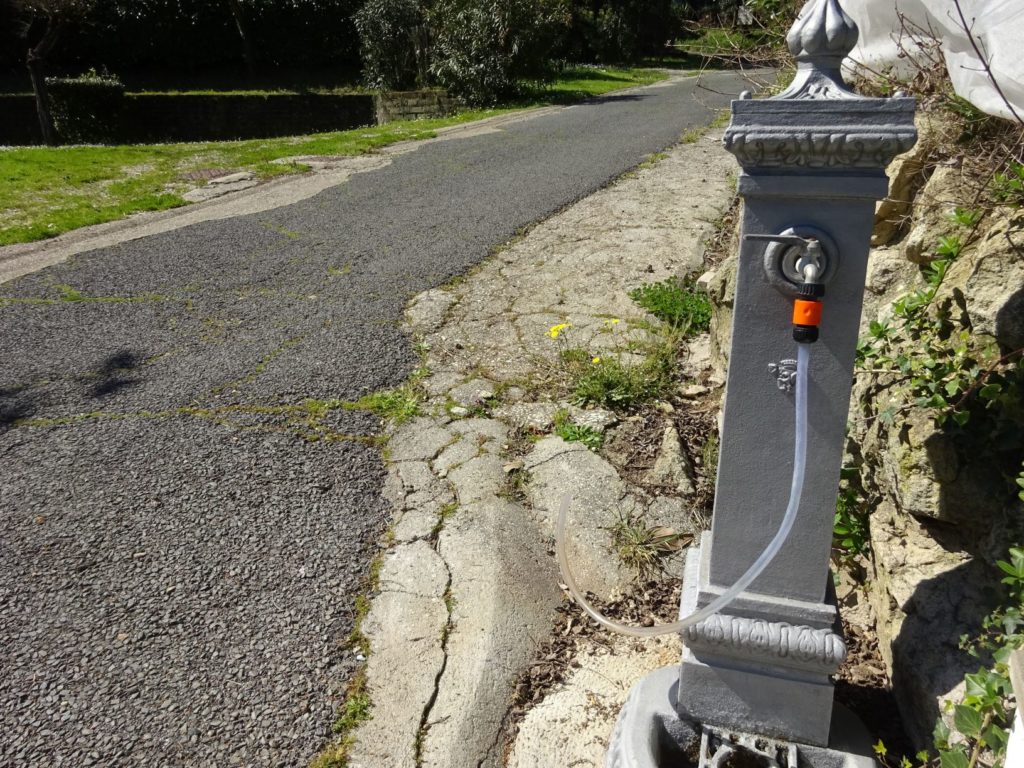
Lay-Flat Hose -Where we have access to a tap close by, then I only get one barrel out. We carry lay-flat hose, one length of 10 m and one of 20m. Once a day top-up is fine with the larger barrel, and it’s a two minute job.
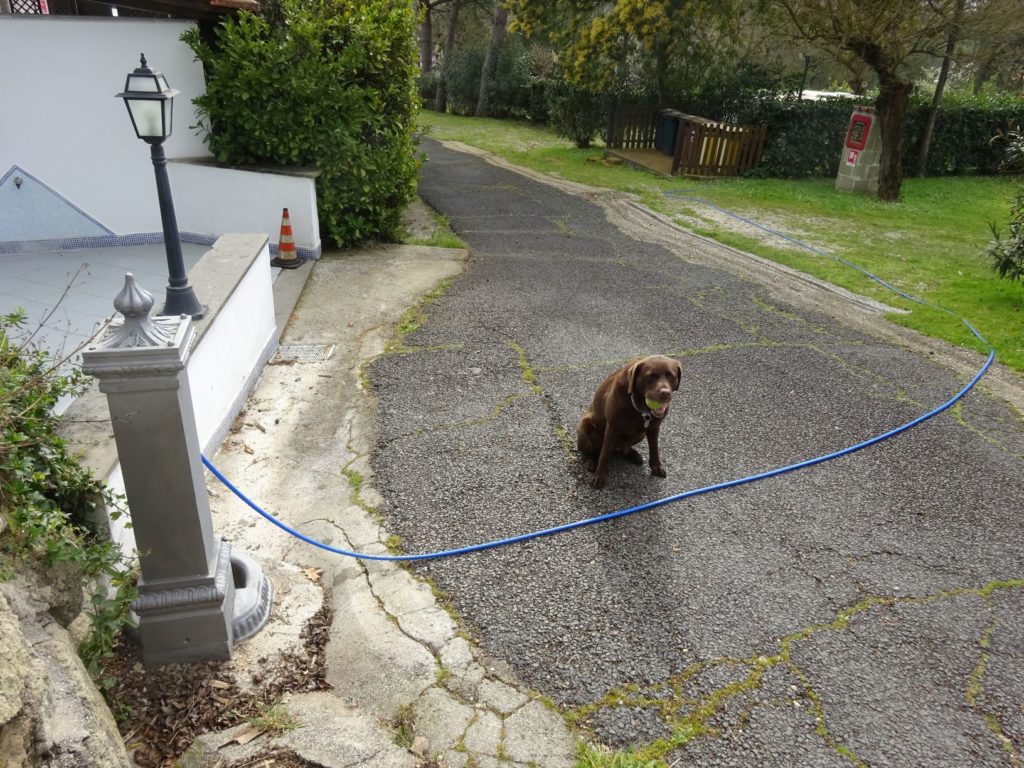
Watch the lay-flat hose, it’s not very good with pressure and can split or burst quite easily, however the convenience of space saving and just turning the tap on and filling the barrel makes up for its sensitivity. I found a pressure reducer on Fleabay, and for those familiar with Boyles Law, the pressure needs reducing, not the flow, so it’s not just a matter of turning the tap on a half turn.

Insulate -If it’s going to be cold, either transiting France in later Autumn, early Spring etc, invest in an insulated jacket for the barrel, we once ended up with a 40l barrel which was frozen overnight, and ice needed to be chipped out before we could get on our way. In fact as I write this it is forecast 0 degrees tonight, and I know it’s still going to be liquid in the morning.

Tap on the pitch – You can get float valves which you fit into the side of the main barrel and ensure constant replenishment of the barrel. They are sold as kits with the flat hose, but I found them tiresome to install, they often leaked and you cannot roll the barrel with them installed and thus cannot leave them on permanently. If we’re on a fully serviced pitch, I do have a compact tank, which with a pressure reducer can be connected to the tap permanently, but it’s not been out much, I just prefer the fill by hose method.
Fittings -We carry lfittings for water, the tap connectors etc. we have a hose jet, which is useful for rinsing olives off the roof, but do not use it with lay-flat the pressure is just too much,. I suppose we should ideally use marine grade fittings, but we don’t drink the water, we use bottled. It’s only because the water through the pipes and into the van can get stagnant, or contaminated. Most of our bottled water comes straight from the campsite tap, not the supermarket !
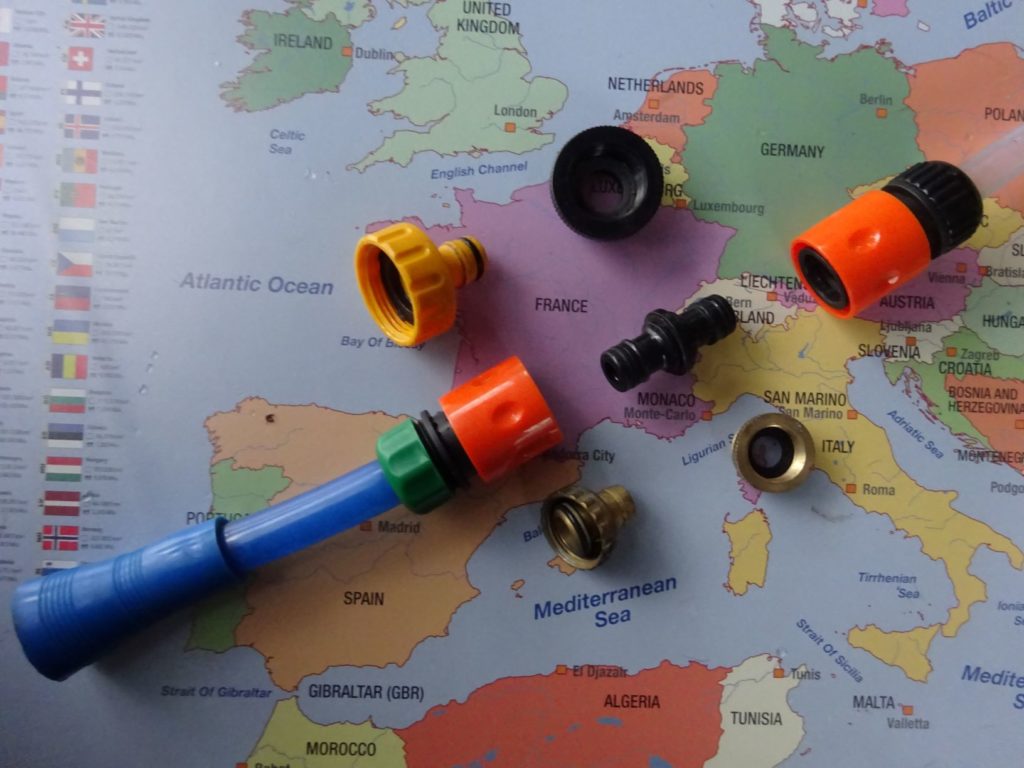
Bottled Water -The supermarket bottled water does give us some issues, it’s after all mineral water, and minerals precipitate when heated, meaning endless descaling, we have found the less minerals the better, and there are some brands marked as suitable for babies or infants which we use and have given us no problems. We always carry a bottle or two as backup, for that afternoon cup of tea on the road, between sites.
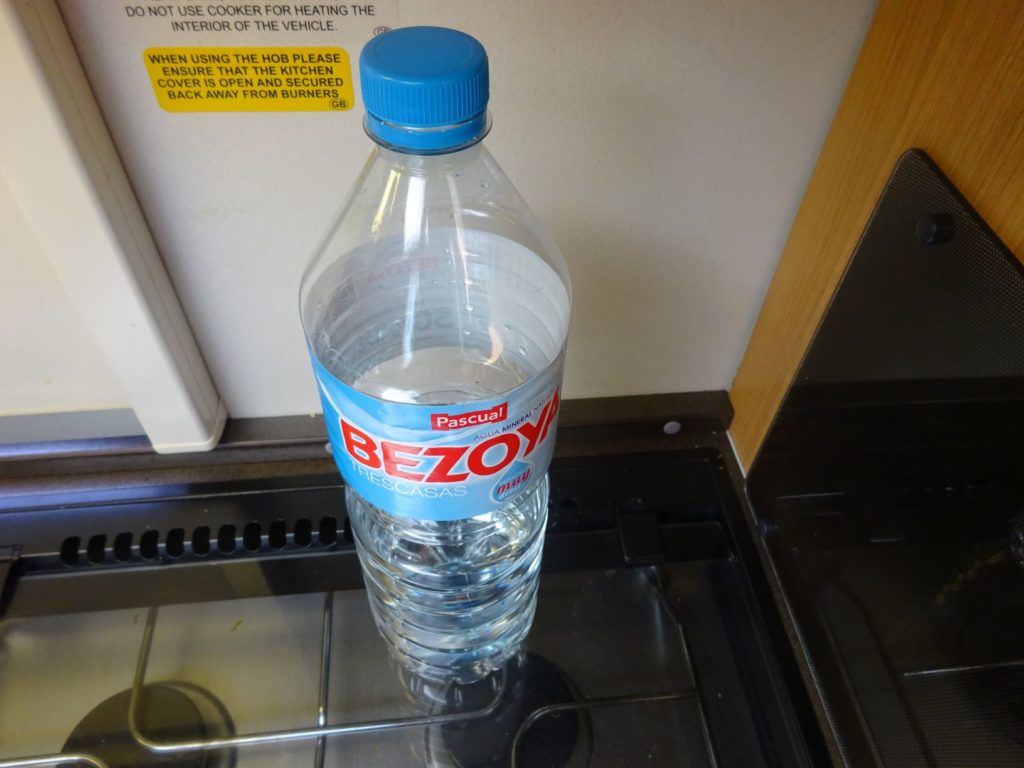
Pump Connection– So that‘s the storage, now how to pump it onboard. We have the Truma pump, but the inlet on our caravan is lower than the barrel, so it has to perform contortionist poses to deliver the wet stuff, and quite frankly doesn’t work as intended. There was a blue “Overhose” which I split to try and get some more flexibility, that didn’t work too well, so eventually solved the problem by substituting the whole hose with some of the lay-flat which works remarkably well. Still not convinced the electrical connections are the best design, but occasionally file them clean, and add a little Vaseline for corrosion protection. I am aware of a Whale substitute pump unit, which looks a lot better , so will look at that when this one dies.
Spare Pump – One essential spare is the 12V pump, it’s only around £15, weighs nothing , but can save all sorts of sorties to find caravan shops, and marine chandlers (boaters use similar products) ; ours broke, and it was a two day excursion in the middle of France to find one.
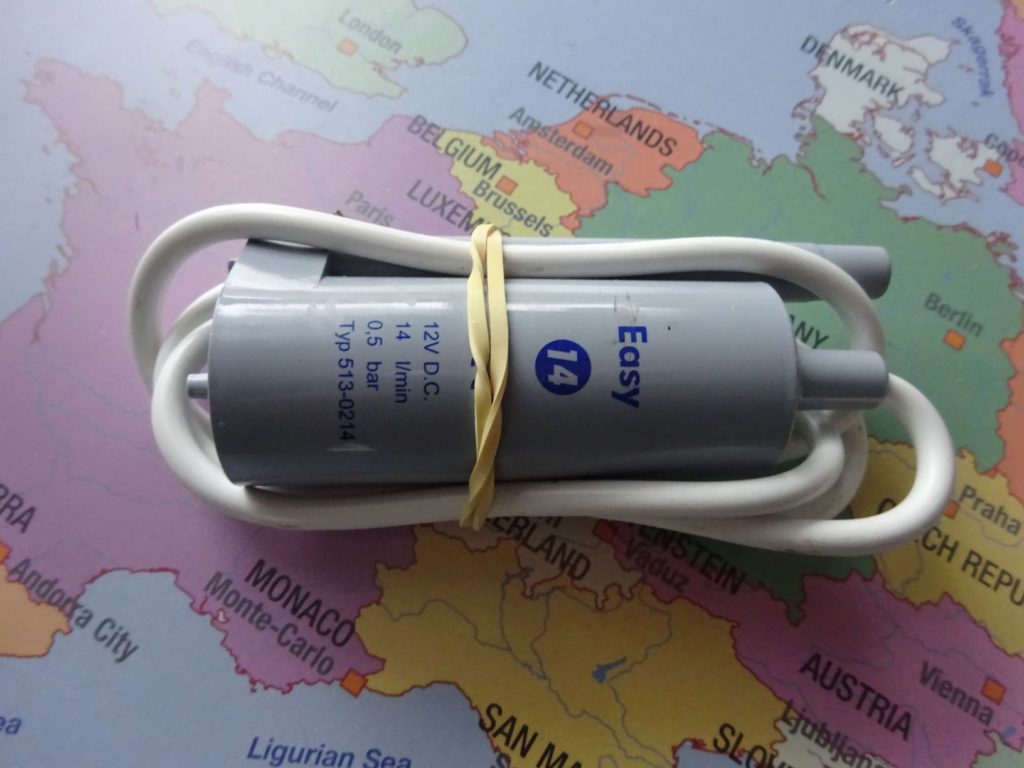
Cistern Filling – Now the water’s onboard. one less fiddly job is filling the cistern for the loo. I tee’d off the pipe to the sink, added a stopcock valve, and made a level gauge, but I nearly got it wrong and drilled into the corner of the cistern. Be careful, and message me if you’re going to attempt this. A Thetford toilet is awfully expensive to replace as I nearly found out! One major advantage is that I only now need to add the rinse, from the outside, which is an easy pour, seen plenty of posts about watering cans etc, now history.
Washdays – Our compact washing machine is mostly the laundry basket , but on Washdays we fill the washing machine from the shower, wash, drain it into the shower tray, and rinse similarly. Great for smalls, occasional washes etc, and only one extra trip to the tap per week. Sometimes the shower tray gets a bit blocked with the fibres, carry a crochet hook.
Washing up – this chore uses a disproportionate amount of water, we changed our washing up bowl to a 2/3 size, so have the same depth, but just use less water, both happy.
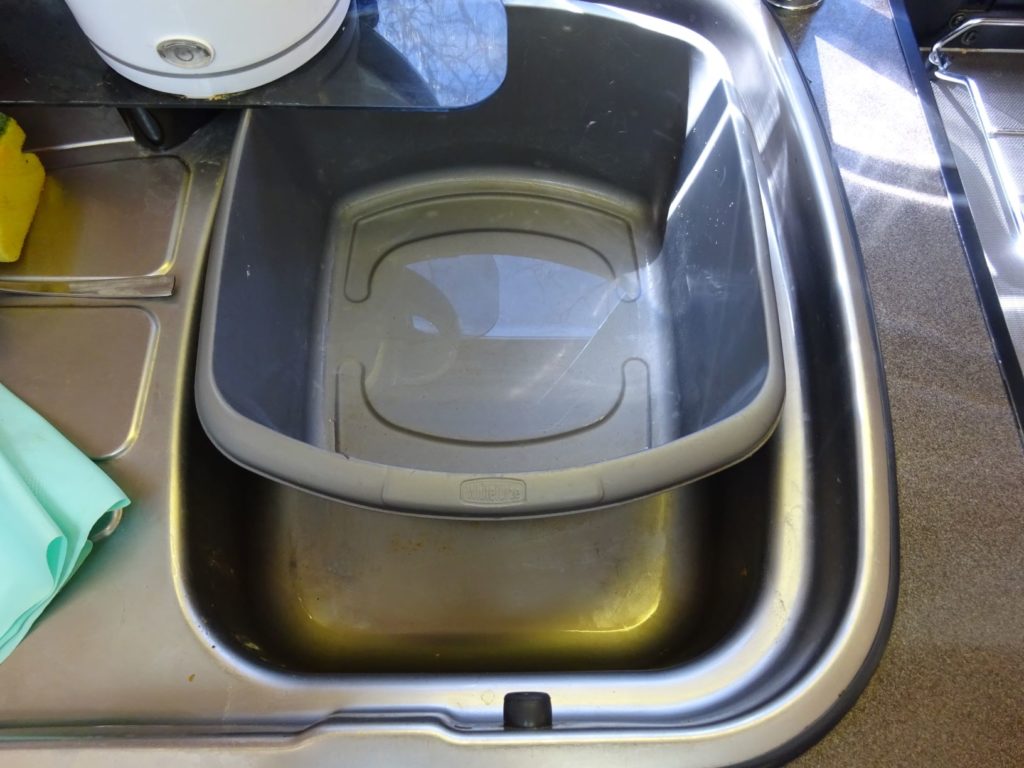
Grey Water – So all that water needs to go somewhere, and that’s outside again. In terms of waste hogs it seemed the bigger the better, after all its less trips to the water disposal. We carry our main hog on the roof of the defender, it’s a luxury having such a large roof space. For the occasional overnight we’ve got a small 20l tank, holds a couple of showers, needs emptying twice a day, but is more convenient.
Some sites have asked us to dispose of grey in the hedge / ditch etc. and some are fully serviced, with our personal drain. We carry the corrugated hose for this. We have a large caravan, so carry two lengths of 5m, and a joiner. I originally started with a single 10m length, but trying to coil it was a nightmare, needing more arms than an octopus. If you’re on the continent with a UK caravan remember that the drain will be on the “wrong side” so the extra length is mostly needed.
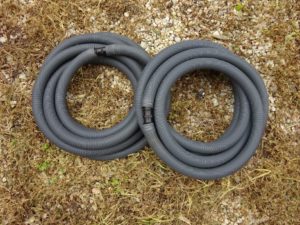
Approximate Water Useage for 2 – For those that have got this far here’s how the water breaks down by approximate volume:
Wash & Shower 10l each, Washing up 5l each, Cistern filling 3l, cleaning teeth ?- just don’t leave the tap running !
Now off to our favourite other water subject – the socially distanced watering hole !
